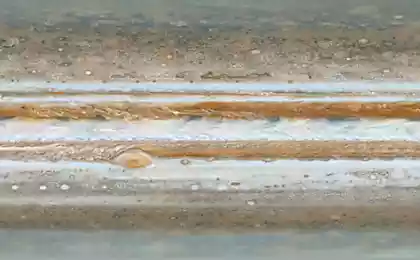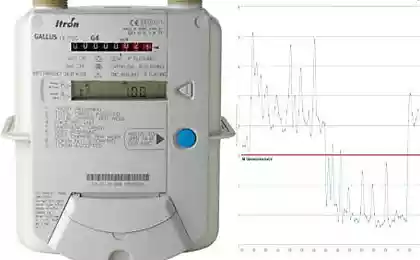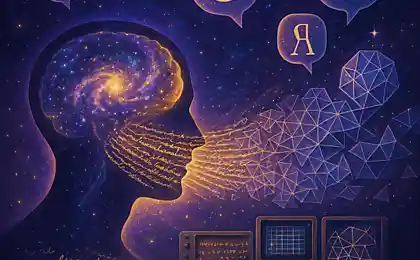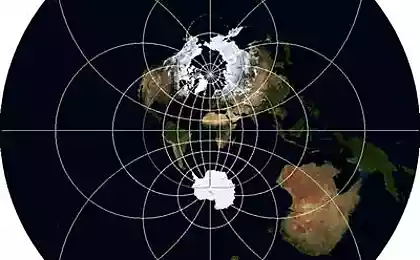746
Winged go blind Juno Jupiter

For many years Jupiter feasting with their loved ones in the cold halls of the outer solar system. Io, Europa and Callisto Jupiter shared table, and Ganymede poured wine. But people are known for their curiosity, by the power of Prometheus fire sent automatic pry feast. Do not pay tribute of respect to the gods, even dared to call the machine Juno, Jupiter's wife in honor of which he was not invited to the banquet. Jupiter was angry then, and shone unbearably bright aurora, blinded Juno.
Old taynyPo modern cosmological ideas from all the planets in the solar system, Jupiter first formed.

It might look like
Protoplanetary disk and the Sun should have a similar composition, because they were formed from a substance in one place. Therefore, Jupiter would be very much like the sun. However, after the atmosphere of the gas giant in 1995 probe "Galileo" found that scientists calculations were wrong. Helium Jupiter was much smaller than the Sun, and is less than it should be according to the calculations. Water vapor, carbon, neon, and sulfur also was less than expected. But the nitrogen in ammonia form was discovered more than estimated. Therefore, our model of the formation of Jupiter and a model of the solar system in something wrong.
After the formation of the planet made a rather big journey, moving in its orbit, and "eating" a lot of that could go for something more useful for the future of humanity (like a large and heavy with a full Martian atmosphere).

But absorbed mass could not form the core of the planet - the substance falls into the dense atmosphere at space velocities and was vaporized by heating. If Jupiter is the kernel (and modern science is inclined to do so), then young solar system had formed a very large planetary embryos of heavy elements, contrary to modern models with planetesimals kilometer size and embryos of planets with a mass of the moon to the Earth.
Finally, most likely under the influence of Saturn, the two planets moved in the outer solar system, Jupiter is now drawn to a distance of five astronomical units from the sun. As a result of the mysterious processes in the young solar system, Jupiter has the greatest possible physical diameter (the heavier the planet would have a smaller diameter due to the greater compression of the matter), weighing three hundred of the earth, its mini solar system of multiple satellites and even a small ring. Jupiter can be called a "planet on steroids" - because of the huge mass within the planet are cyclopean scale forces, and all the phenomena associated with it, suffering gigantism. Jupiter of colossal size and power of the magnetosphere (stronger than the Earth 14 times), which generates giant aurora.
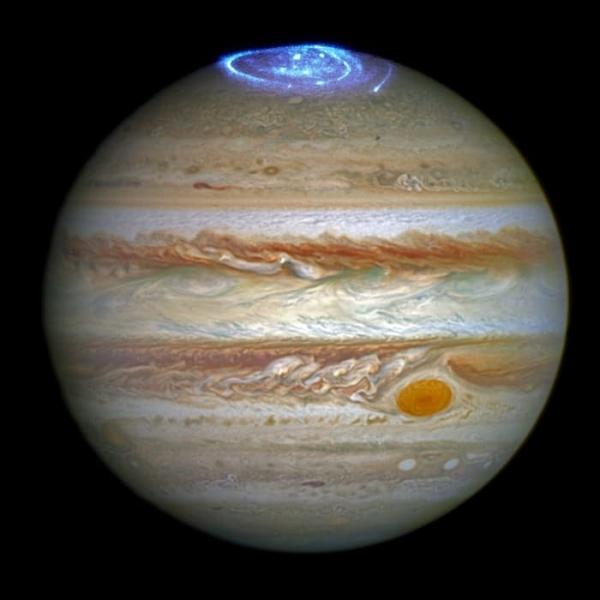
In these mysteries of the gas giant and plunge probe "Juno", which should go into orbit around Jupiter on July 4 US time (in Russia will be the morning of July 5). Tasks that will solve the "Juno", is easy to remember acronym for dogs - Origin, structure, atmosphere, magnetosphere
Science karuselPSAM Jupiter Juno will explore a diverse set of tools:.
microwave radiometer (MWR) will glance at the 550 kilometers under the edge of the cloud and will be able to determine the content of water vapor in the atmosphere. Structurally, it is a six antennas on the sides of the machine:

Gravity Experiment (Gravity Science Experiment) will use the antenna to communicate with Earth for very precise determination of the gravitational field. The signal from the Earth will be immediately relayed, and its frequency offset due to the Doppler effect will determine small changes in speed due to the uneven gravitational field of Jupiter.

directional antenna will be used in this experiment
Magnetometer (MAG) , passed on to the side at the end of one of the solar panels (a standard solution, try to remove all the magnetometers running away from the electronics unit) would create a three-dimensional map of the magnetic field of Jupiter.

In the experiment «distribution of the particles in the auroral» (JADE) three electronic sensors and one ion will catch particles aurora.
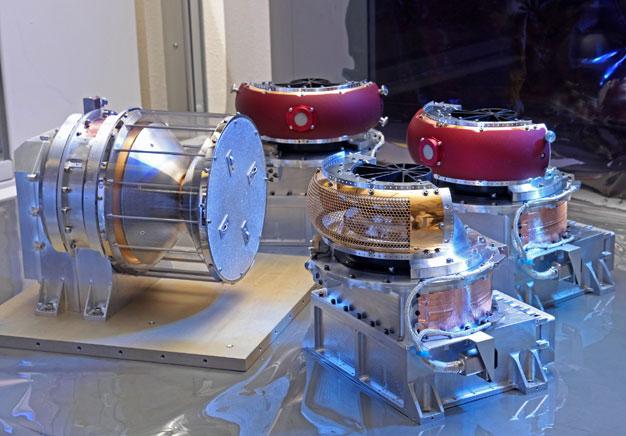
high-energy particle detector (JEDI) of three identical sensors will determine how flying in the vicinity of high-energy particles interact with the magnetosphere of Jupiter. A large number of these particles gets trapped magnetic field of Jupiter and lights aurora at the poles.

Infrared surveyor auroras (JIRAM) will allow to obtain spectra of auroral and find out the composition of the atmosphere around them.

Ultraviolet Spectrograph (UVS) will enable to remotely identify the composition of the upper atmosphere in the other range, adding JIRAM.

Tool «Waves» (Waves) of the two antennas will capture the radio and plasma waves in the vicinity of Jupiter. One antenna is structurally very different from those that once stood "horns" on TV, and the other is a conventional magnetic coil.

And finally, the camera JunoCam does not bear serious scientific load, and added for the purposes of promotion and public relations. He worked in the visible light camera should be at least seven orbits to make beautiful pictures, and then fails in the Radiation hell, where will dive "Juno" each turn.
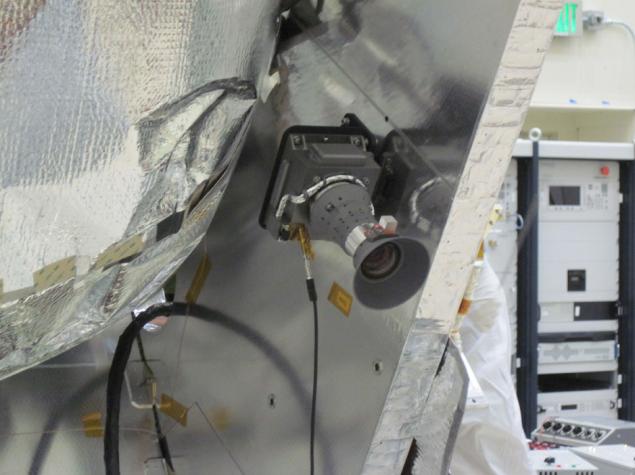
All the tools are installed on the sides of the apparatus, and, in the working "Juno" mode, it will look into the depths of Jupiter, the "rest" and calibrated by looking in the opposite direction.
Waltz Follauta

Rotation "Juno" - is a conscious decision. Many of the spacecraft orientation and stabilization method for stabilizing the rotation allows for "free" to maintain the desired position along one axis, spent fuel is only for promotion of the device and does not require working electronics to maintain the established orientation. In the context of powerful magnetic fields and high-energy particles of a full three-axis orientation may fail and set the unit to a secure mode with the loss of the scientific program of this coil and spinning top "Juno" will maintain the correct position for any failure of any electronics. On the way to Jupiter, "Juno" was rotated at 1 rev / min, the working mode of research 2 / min, and to maneuver the machine will spin up to 5 rev / min.
Exclusion from the probe to the control electronics for the radiation-hazardous areas - is not the only measure to combat electromagnetic Jupiter anger. During the mission the surface of the unit will receive a dose of 11 megarads or 110 thousand sievert. For comparison - resulting in one point 1 sievert - this is the beginning of radiation sickness in humans, and a dose of 6 Sv is already deadly. Electronics more flesh, but such a dose would be fatal for her. Therefore, Juno is radiation "safe haven" of titanium thickness of 1 cm and a total weight of 200 kg. Inside electronics should receive only 25 kilorad (250 Sv) for the entire mission, and the electronics is designed to double the dose. Electronics that can not be placed in the hopper, it is necessary to protect the site, for example, more than half of the mass of the star sensor takes protection from radiation.

37 jumps adTormozhenie Jupiter 4/5 of July will be the start of the mission. By reducing its speed to 542 meters per second, "Juno" will be released on pre-orbit period of 53, 5 days. If braking will not be successful, the probe razminetsya forever with Jupiter. Therefore, at this stage, just in case, turn off all the scientific instruments that were not random noise. After two turns on a preliminary orbit "Juno" will be released to the scientific orbit period of 14 days.

This highly elliptical orbit "Juno" will periodically diving into close proximity to Jupiter (to a height of 4-8 thousand kilometers from the cloud level) and to move away again beyond the orbit of Callisto. Because of the rotation of Jupiter's orbit, each time will be held on different meridians, and the unit will be able to fly over the entire surface, which will create a three-dimensional map of the magnetosphere of Jupiter all.
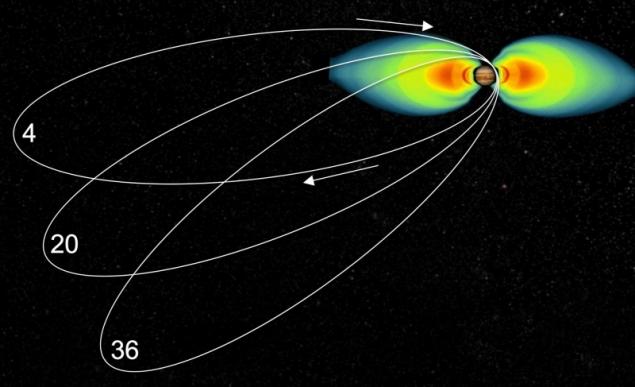
If all goes according to plan, at the turn of the 37 "Juno" will perform the last maneuver, and February 20, 2018 will burn in the atmosphere of Jupiter.
Poverty and a lack of radiatsiiPolnaya cost of the project is estimated at 1, $ 1 billion US in 2011. It's a bit of space, so among the technical solutions can be found such that, depending on the mood, can be called a triumph of ingenuity or forced tricks from poverty.
First of all, "Juno" did not fly to Jupiter straight road. To use more lifting and more expensive launch vehicle, the probe launched first for the orbit of Mars, and then conducted a gravity assist from Earth.

This solution will increase the speed by 70%, but because of the need to return to the "Juno" Earth flew an extra two years. Considering that the development of the machine began in 2006, it turns out that people will give this project 12 years of his life. In this case, scientists and engineers will be able to participate in only one, if you are very lucky, the two space projects for their academic career. And it's a little sad.
Second, the large solar panels, very high-tech, which is now so praised, are not the ideal solution. In orbit of Jupiter (5 AU) "Juno" will receive only 1/25 of the energy of the sun, compared to Earth's orbit. Therefore, the probe with open panels exceeds 20 meters in width, and weight of the panels is 340 kg. At the same time, a small, lightweight, working without radioisotope generator (RTG) control system would have been a much better choice, providing "Juno" with heat and electricity. But in the United States long ago stopped its production of plutonium-238 for RTGs, and, for example, "Kyuriositi" nourishes and warms the plutonium is of Russian origin. In 2013, the US plutonium production resumed, but still it is expensive and scarce product.
Burden piaraKrome scientific problems, "Juno" is also engaged in the popularization of science and space exploration, including for children. Firstly, JunoCam camera was added to our enjoyment with you - it will delight us with beautiful pictures of Jupiter first seven turns. They even say that the public can participate in the selection for photography purposes. Second, NASA has concluded a partnership agreement with the LEGO, and on the unit flew three Lego figurines: Jupiter, Juno and Galileo Galilei
.


But at the press conference was a model of "Juno" from Lego
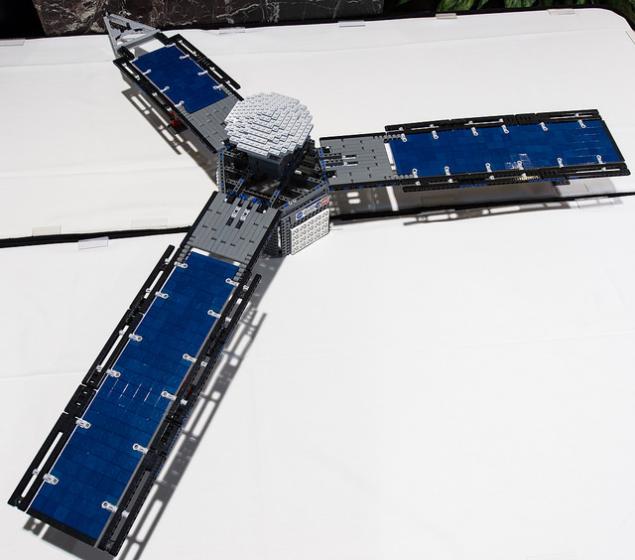
Hopefully, it will inspire someone to future scientists, engineers and astronauts.
EpilogMy do not know what the photo shows us junocam. But we know that, flying in a polar orbit "Juno" will look at Jupiter from above and below. To finish on a positive note, I tried to find some spectacular camera angles that we can see in the following months. And it helped me in this wonderful planetarium sandbox SpaceEngine.
Jupiter is always visible to us is completely illuminated with Earth. But the device in its orbit can take a photo of the crescent planet. And the shadow of one of the Galilean satellites additionally decorate a picture.

The four Galilean satellites often form spectacular figures. In the background is seen Sozvezdia international Orion and the Pleiades.

You can see and a straight line.

View of the north pole and the Magellanic Clouds.
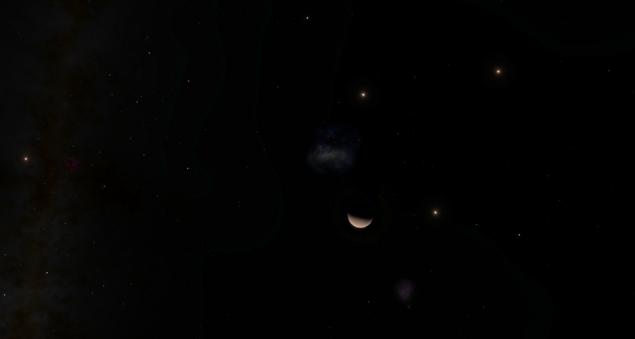
View of the south pole and the constellation Ursa Major.

Source: geektimes.ru/post/277740/
Model 3, Apple car and another 20 new models of electric cars
The end of the main probe Dawn mission. The device remains in Ceres forever
